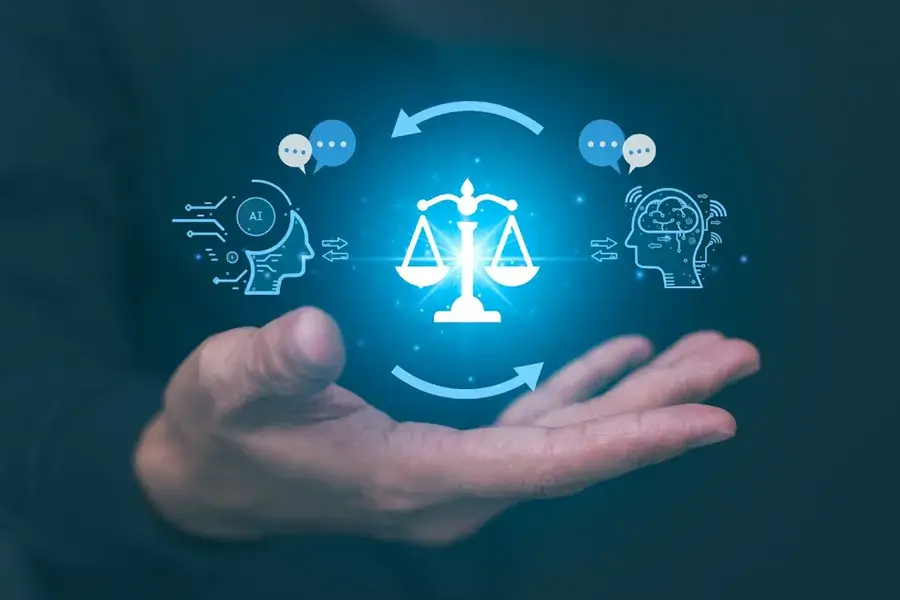Underlying Gaps in the AI Healthcare Boom: Human Oversight is Key

Nearly half of healthcare systems currently use artificial intelligence (AI) solutions to address workforce issues, but AI alone can never replace the clinical expertise and deep domain knowledge of healthcare professionals acquired over years of education, training, and hands-on experience.
Healthcare relies heavily on building trust and connection between the clinician and patient for effective, personalized care. With increasing demand for quality healthcare, clinicians globally struggle to manage time and work pressures, leading to burnout. Although AI has been around for decades, it has become more widely used with the rapid evolution of its capabilities. AI integration in the healthcare market is expected to grow globally from $27.69 billion in 2024 to $490.96 billion by 2032, according to a report by Fortune Business Insights.
AI has huge potential to significantly improve care delivery and provide a better patient experience by enhancing patient interactions, diagnosis, and treatments and streamlining administrative tasks to increase efficiency and accuracy, but there remains a need to keep a human-in-the-loop (HITL). The AMA even uses the term “augmented intelligence” to “reflect its perspective that artificial intelligence tools and services support rather than explicitly replace human decision-making.”
In areas such as clinical documentation, AI-powered solutions greatly enhance the capacity of virtual scribes, but the best results require human review. AI’s capabilities can be leveraged to manage clinician time effectively by automating the ‘chore’ tasks so clinicians can focus on their ‘core’ work of delivering high-quality personalized care.
AI Alone Falls Short of Generating a Comprehensive Note
Undoubtedly AI is improving clinician productivity and, in turn, care quality by reducing documentation time by up to 70%. By generating chart notes from patient visits, it allows clinicians to focus on the patient, actively listen, and provide thoughtful and data-driven responses. However, this efficiency falls short of achieving completely accurate, unbiased, and compliant results.
Limitations of AI-only Solutions in Healthcare

Unreliable Outcomes
Inaccuracy in interpretation leads to hallucinations, omissions, and misinterpretations in chart notes

Inability to Validate
Not able to verify audio-generated data with the existing information in electronic health records

Formatting Limitations
Failure to record finer clinical details or eliminate irrelevant conversations due to formatting limitations

Insufficient Data Issues
Inability to identify patterns or establish connections with insufficient data
Human Oversight Required
The responsibilities of a clinician extend far beyond standardized questions and responses, encompassing nuances and expertise that only a HITL can provide. While automated speech recognition can quickly produce a stylistically acceptable note, it often leaves behind an additional burden of correcting errors, validating its content with information in the EHR, and enhancing the note with supporting data.
HITLs remove this burden, providing a measurable reduction in clinician time spent on verifying and adding critical details. A clinician could reduce their documentation burden from 44 hours with AI only solutions to just under 15 a month – a 67% reduction overall. This also impacts reimbursement, demonstrating a potential increase in revenue by 12.5% when using a clinical HITL1.
With human oversight, healthcare organizations:
Ensure Accuracy and Quality Control
AI can process vast amounts of data and identify patterns beyond human capability. However, errors can still occur and algorithms may struggle with complex and nuanced clinical situations. HITLs can identify and correct those errors, ensuring the accuracy of the medical documentation. This oversight is critical in preventing potential harm to a patient from inaccurate information.
Enhance AI Learning and Improvement
HITLs create a continuous feedback loop that enhances AI learning. When humans intervene to correct errors or refine outputs, they provide valuable data that trains and improves the algorithm. Over time, this feedback helps the AI system become more accurate and reliable, ultimately producing better results.
Address Complex Decision Making
AI can provide data and suggest actions, but it can lack the contextual understanding required to interpret that data correctly. Clinicians draw on years of experience and understanding human behavior to make complex decisions. By integrating HITLs, healthcare organizations ensure that these human skills complement AI efficiency, resulting in more comprehensive and effective care delivery.
Mitigate Documentation Burden
AI-driven solutions can expedite documentation but it requires human review and correction. HITLs ensure that the process of editing and correcting does not land on clinicians or other clinical staff to complete. If your organization does not have HITLs behind your AI-enabled solutions, then your workforce is that HITL. In addition to ensuring data accuracy, HITLs enhance the documentation, making the final notes more comprehensive.
1 Based on IKS Health internal data of 400 encounters
Enable Better Work-Life Balance
The integration of AI in healthcare is transforming the industry, offering numerous benefits, including improved efficiency and enhanced data processing capabilities. However, to fully realize these benefits and maintain the highest level of patient care, it is crucial to keep a HITL.
The combined coordination between the two achieves what neither a human nor a machine can do independently. Together, they create more robust and reliable documentation and enable safer patient care.
Get deeper insights about AI and HITLs in scribing solutions in our whitepaper, Virtual Scribe and Ambient Speech Competitive Market Insights.


